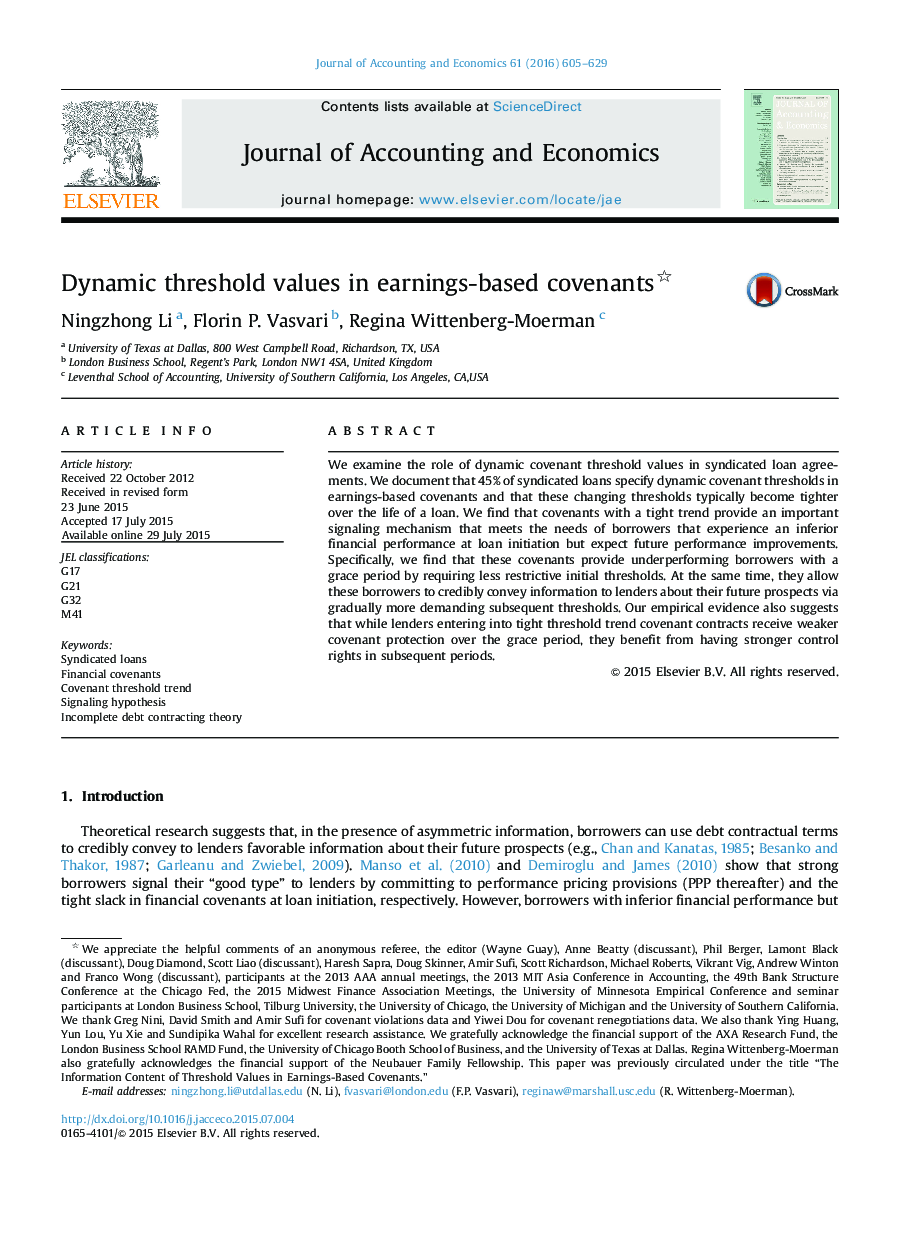| کد مقاله | کد نشریه | سال انتشار | مقاله انگلیسی | نسخه تمام متن |
|---|---|---|---|---|
| 5086550 | 1478183 | 2016 | 25 صفحه PDF | دانلود رایگان |
- Loan contracts commonly specify covenant thresholds in earnings-based covenants that become tighter over time.
- These covenants provide a signaling mechanism for underperforming borrowers that expect future performance improvements.
- These covenants provide underperforming borrowers with a grace period by requiring less restrictive initial thresholds.
- These covenants covey information about borrowers׳ future prospects via gradually more demanding subsequent thresholds.
We examine the role of dynamic covenant threshold values in syndicated loan agreements. We document that 45% of syndicated loans specify dynamic covenant thresholds in earnings-based covenants and that these changing thresholds typically become tighter over the life of a loan. We find that covenants with a tight trend provide an important signaling mechanism that meets the needs of borrowers that experience an inferior financial performance at loan initiation but expect future performance improvements. Specifically, we find that these covenants provide underperforming borrowers with a grace period by requiring less restrictive initial thresholds. At the same time, they allow these borrowers to credibly convey information to lenders about their future prospects via gradually more demanding subsequent thresholds. Our empirical evidence also suggests that while lenders entering into tight threshold trend covenant contracts receive weaker covenant protection over the grace period, they benefit from having stronger control rights in subsequent periods.
Journal: Journal of Accounting and Economics - Volume 61, Issues 2â3, AprilâMay 2016, Pages 605-629
